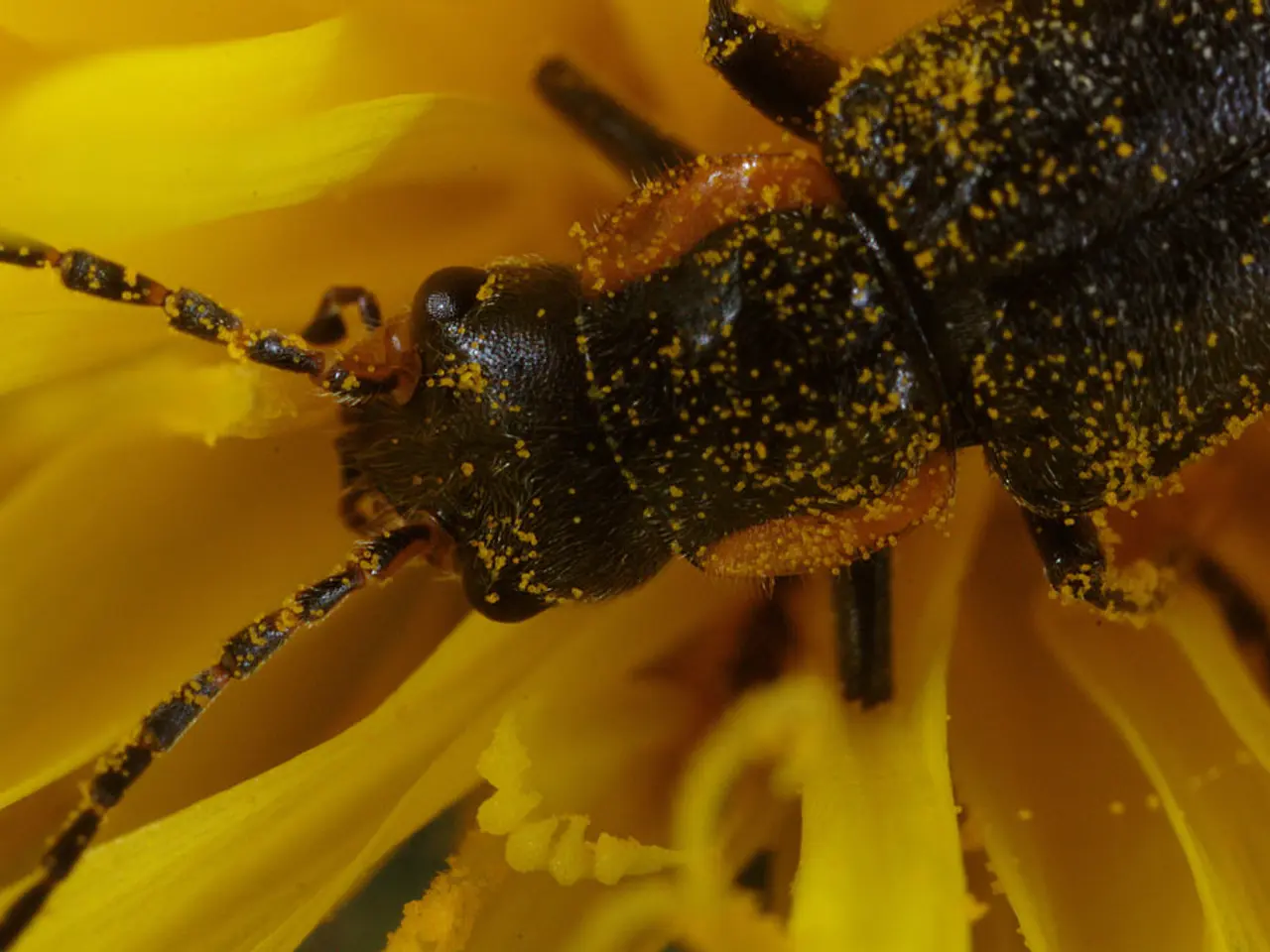Efficient Tricks using Natural Methods to Prevent Pests from Invading Your Garden Permanently
In the quest for a thriving garden, gardeners are increasingly turning to natural pest control methods that not only protect plants but also enrich soil and support pollinators. These eco-friendly strategies, often using items found in households, are not only cost-effective but also safe for children, pets, and edible plants.
One of the most popular methods is the use of essential oils and natural sprays. Products containing essential oils such as peppermint, citronella, cinnamon, and neem can overwhelm pests' nervous systems or repel them. Neem oil, in particular, disrupts the life cycles of pests like aphids and leaf miners when sprayed on affected plants. Garlic sprays made from crushed garlic steeped in water also serve as natural repellents against many common pests.
Beneficial insects, such as ladybugs and lacewings, help control aphid populations and other pests naturally, as these insects feed on harmful garden pests without damaging plants. Another effective method is diatomaceous earth, which deters soft-bodied pests like slugs and snails. It is plant-safe and acts as an abrasive to pests.
Companion planting is another strategic approach. Planting pest-repellent or pest-attracting plants can protect vulnerable crops. For example, interplanting dill or parsley attracts beneficial insects, while using nasturtiums can lure aphids away from other plants. Lavender and marigolds also repel mosquitoes, flies, moths, and other pests due to their strong fragrances and natural insecticidal compounds like pyrethrin.
Crop rotation, row covers, sanitation, and garden hygiene are other essential practices for maintaining a healthy garden ecosystem. Rotating crops yearly helps break pest life cycles and reduces pest buildup. Row covers protect plants from pests and can double as protection against frost and sun damage. Proper ventilation should be maintained under covers to prevent heat and moisture buildup. Removing plant debris and weeds after harvest and before planting reduces places where pests and diseases can overwinter, lowering the risk of infestations.
Reflective items like old CDs, foil strips, or mirrors can scare off birds and bugs by confusing them with moving light flashes. Floating row covers are lightweight fabric sheets that shield plants from flying pests while allowing sunlight, air, and moisture in. Crushed eggshells create a sharp, uncomfortable barrier for slugs and cutworms and provide calcium to the soil as they break down. Yellow sticky traps attract flying insects like whiteflies, gnats, and aphids.
Epsom salt, containing magnesium, boosts plant health and deters pests, especially for tomatoes and peppers. Hot pepper sprays, made from cayenne pepper, are effective and safe deterrents for a broad range of pests, including sap-sucking insects, slugs, and even some animals like squirrels and deer. They can be applied to leaves, stems, and soil without harsh chemical residues.
Beneficial nematodes are microscopic organisms that invade and kill soil-dwelling pests like grubs and root weevils, and they're safe for plants, people, and pets. Petunias naturally repel aphids, tomato worms, and asparagus beetles, and attract pollinators to boost garden health. Chives offer protection against aphids, Japanese beetles, and carrot rust flies, and their purple blooms attract bees and other beneficial insects.
By combining these approaches, gardeners can create a balanced, healthy garden ecosystem that minimizes pest damage without synthetic chemicals. This sustainable approach not only benefits the garden but also supports the environment by reducing environmental contamination and using biodegradable, commonly available ingredients.
- In the realm of fashion and beauty, essential oils such as peppermint, citronella, cinnamon, and neem also find use, often in natural sprays, to overwhelm the nervous systems of pests or repel them.
- When it comes to food and drink, garlic sprays made from crushed garlic steeped in water serve as natural repellents against many common pests, just like the DIY hot pepper sprays made from cayenne pepper that are effective and safe deterrents for a broad range of pests.
- For those with a keen interest in home and garden, beneficial insects like ladybugs and lacewings are not just attractive additions, but they help control aphid populations and other pests, while companions like lavender and marigolds repel mosquitoes, flies, moths, and other pests.
- Lastly, for travelers and car enthusiasts, the use of reflective items like old CDs or mirrors can scare off birds and bugs by confusing them, a strategy that can be applied to vehicles to keep them pest-free, much like the use of yellow sticky traps to attract and remove flying insects.




